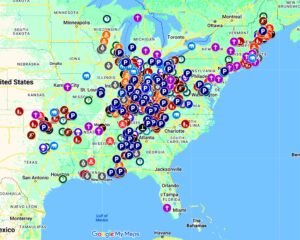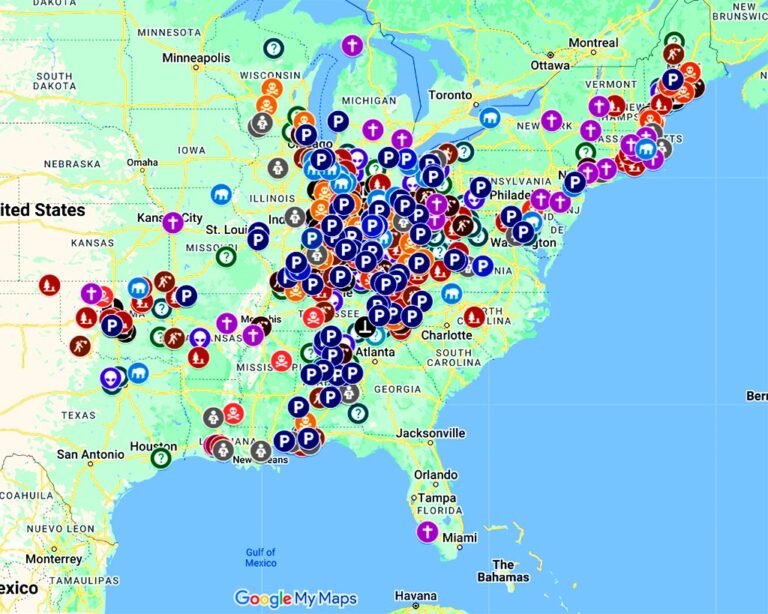The Crime Directive
We’re diving deep into the labyrinth of crime statistics, exploring whether crime is genuinely on the rise and how to navigate the swirling vortex of information, misinformation, and narratives surrounding this critical issue. We’ll be your Sherlock Holmes, sifting through the evidence, dissecting the claims, and unraveling the truth behind the alarming headlines that dominate our news feeds.
Have you ever felt like you’re trapped in a crime drama, constantly bombarded with news of rising crime rates, lurking dangers, and a society teetering on the brink? You’re not alone. The fear of crime, fueled by media narratives and political rhetoric, has become a pervasive force shaping our perceptions and influencing our choices. But is this fear justified by reality? Is crime truly spiraling out of control, or are we being fed a carefully curated narrative designed to manipulate our anxieties?
Why Statistics?
Crime statistics, the lifeblood of criminology, can be deceptive creatures. They can be molded, manipulated, and misinterpreted to fit various agendas, leaving us scratching our heads and wondering who to believe. Understanding how these statistics are gathered, analyzed, and presented is crucial to forming an informed opinion. This journey will equip you with the tools to critically examine crime data, spot potential biases, and discern the truth amidst the statistical noise.
This investigation argues that while crime rates fluctuate and are influenced by various internal and external influences, understanding the multifaceted nature of crime data is crucial for separating fact from fiction. We’ll explore the challenges of interpreting crime statistics, the social and economic costs associated with crime, the broader implications for society, and ultimately, empower you to become a more informed and critical consumer of crime-related information.
The Elusive Nature of Crime Statistics: Decoding the Data Deluge
Crime statistics, often presented as objective indicators of societal well-being, are anything but simple. These figures, gathered from various sources – police reports, victimization surveys, and other governmental agencies – can be influenced by a constellation of factors, making direct comparisons across time and place a treacherous endeavor.
For instance, changes in reporting practices, police staffing levels, or even the very definitions of certain crimes can lead to fluctuations in reported crime rates that are not reflective of actual changes in criminal activity. Imagine a town where the police department suddenly increases its focus on traffic violations. This might lead to a spike in reported traffic offenses, creating the illusion of a surge in crime, when in reality, the underlying behavior hasn’t changed significantly. The dark figure of crime, encompassing all those offenses that go unreported, further muddies the waters, making it challenging to paint a complete picture of criminal activity.
Did you know?
The National Crime Victimization Survey (NCVS), conducted by the Bureau of Justice Statistics, has consistently shown higher rates of crime than the FBI’s Uniform Crime Reporting (UCR) Program? This highlights the limitations of relying solely on police-reported data and the importance of considering multiple data sources when analyzing crime trends.
Unmasking the Drivers of Crime: A Tangled Web of Influences
Crime, a social phenomenon with deep roots in human behavior, is influenced by a complex interplay of social, economic, and environmental factors. Understanding these intertwined drivers is crucial for addressing the root causes of crime and formulating effective crime prevention strategies.
Driving Factors:
Socioeconomic Factors: Poverty, income inequality, unemployment, and lack of educational opportunities have long been recognized as potent contributors to criminal behavior. Imagine a neighborhood plagued by joblessness and limited access to education. Such an environment can breed desperation and hopelessness, potentially pushing individuals towards criminal activity as a means of survival or a misguided attempt to achieve a better life.
Community Dynamics: The breakdown of social institutions, including families, schools, and community organizations, can erode social control and create fertile ground for criminal behavior to flourish. Think of a community lacking a strong sense of cohesion and shared values. In such an environment, informal social controls that typically deter crime may weaken, making it easier for criminal behavior to take root.
Environmental Factors: Studies have shown a correlation between certain environmental conditions and crime rates. For instance, areas with high population density, physical deterioration, and lack of green spaces may experience higher levels of crime. Visualize a densely populated urban area with dilapidated buildings and a lack of recreational facilities. Such an environment can foster a sense of anonymity, making it easier for criminals to operate undetected and potentially contributing to higher crime rates.
Drug and Alcohol Abuse: Substance abuse often acts as a catalyst for criminal activity. Individuals under the influence of drugs or alcohol may be more prone to engage in risky behaviors, including violent crime and property crime. Picture someone struggling with addiction. They might resort to theft or other criminal acts to support their habit, highlighting the complex relationship between substance abuse and crime.
Recognizing the multitude of factors that contribute to criminal activity, it’s essential to explore the potential dangers associated with unchecked crime rates and the long-term implications for society.
The Ripple Effects of Crime: A Looming Threat to Social Fabric
Let’s take a moment to consider the far-reaching consequences of crime, from its direct impact on individuals to its erosion of the very foundation of a healthy society. Here’s a glimpse into the domino effect of unchecked criminal activity:
Fear and Anxiety: High crime rates can instill a pervasive sense of fear and insecurity within communities, impacting residents’ quality of life, their willingness to engage in social activities, and even their mental health. Imagine living in a neighborhood where you constantly feel unsafe walking alone at night or allowing your children to play outside.
Economic Costs: Crime imposes significant economic burdens on individuals, businesses, and the government. Think about the costs associated with property damage, medical expenses for victims, lost productivity, and the massive investment in law enforcement and the justice system.
Social Fragmentation: Crime can erode trust within communities, creating divisions between different social groups and undermining social cohesion. Picture a community where neighbors are suspicious of each other, afraid to interact, and unwilling to cooperate.
Erosion of Public Institutions: When crime rates soar, it can lead to a loss of faith in law enforcement and the justice system, potentially undermining their effectiveness and creating a vicious cycle of distrust and escalating crime.
Diminished Economic Development: High crime rates can deter investment, hinder economic growth, and make it challenging to attract and retain businesses, leading to job losses and economic stagnation. Imagine a city struggling with rampant crime. Businesses may be reluctant to invest, fearing property damage or theft, ultimately harming the local economy.
Unique Challenges
- Funding Constraints: Securing adequate funding for social programs, affordable housing initiatives, and job training programs requires a commitment from policymakers and public support for social investments. The political climate surrounding these issues can be challenging.
- Political Will: Creating lasting change requires political will and the support of elected officials who prioritize addressing poverty and homelessness as critical social issues.
- Public Perceptions: Changing public perceptions about poverty and homelessness, combating stereotypes, and fostering empathy and understanding are crucial for building support for effective solutions.
- Systemic Barriers: Addressing systemic racism, discrimination, and institutional barriers that perpetuate inequality requires a commitment to social justice and a willingness to dismantle structures that privilege some while disadvantaging others.
- Complexity and Interconnectedness: The poverty-to-homelessness pipeline is a complex and multifaceted issue, requiring solutions that address interconnected factors and acknowledge the intersectionality of challenges faced by those at risk.
Navigating the Crime Conundrum – A Call for Informed Action
While the headlines may scream about rising crime rates, the reality is more nuanced. Understanding the complexities of crime data, the underlying causes of criminal behavior, and the far-reaching implications of unchecked crime is crucial for navigating this challenging issue.
We’ve explored the inherent difficulties of interpreting crime statistics, the intricate web of factors that influence criminal activity, and the significant social and economic costs associated with crime. We’ve also delved into the broader implications for society and the potential dangers of unchecked crime rates.
Armed with this knowledge, it’s time to move beyond fear-mongering and engage in constructive dialogue about crime prevention and criminal justice reform. By critically evaluating crime data, investing in evidence-based solutions, and promoting social justice, we can build safer and more resilient communities for everyone.
The Verdict
The truth, as it often does, resides in the gray areas.
The perception of rising crime is often more pronounced than the reality, fueled by a confluence of media narratives, political rhetoric, and personal experiences. While some crime categories have seen increases, it’s essential to analyze the data carefully, avoid generalizations, and embrace a balanced perspective.
Ultimately, by understanding the complexities of crime trends and focusing on evidence-based solutions, we can create safer communities for everyone without succumbing to fear and misinformation.
While some crime categories, such as homicides, have experienced concerning increases in certain regions, others, like property crime, have shown a general decline over the past few decades. It’s essential to remember that crime trends are rarely uniform across geographic locations, demographic groups, and specific types of offenses.
Factors Contributing to the Perception of Rising Crime:
- The Media’s Spotlight Effect: The 24/7 news cycle, with its insatiable appetite for sensational stories, can create a skewed perception of crime. Vivid accounts of violent crime, often amplified by social media, can leave us with the impression that crime is spiraling out of control, even when the statistics don’t fully support this narrative.
- Political Rhetoric: Crime often becomes a political football, with candidates and parties using it to stoke fear and advance their agendas. Selective use of statistics and emotionally charged language can create a distorted view of crime trends.
- Personal Experiences: Our own encounters with crime, or those of people we know, can powerfully shape our perceptions. Even if crime rates are statistically decreasing, a single negative experience can leave a lasting impression and influence our beliefs about overall crime levels.
A Balanced Perspective
While acknowledging genuine concerns about increases in certain crime categories, it’s crucial to avoid succumbing to fear-mongering and generalizations. A nuanced understanding of crime trends requires:
- Looking beyond the headlines: Scrutinize the data, consider the source, and be wary of sensationalized reporting.
- Examining crime trends across various categories and geographic locations: Avoid generalizations based on isolated incidents or specific crime types.
- Understanding the limitations of crime statistics: Remember the dark figure of crime and the complexities of data collection.
- Focusing on evidence-based solutions: Instead of resorting to knee-jerk reactions or punitive measures, invest in strategies proven to reduce crime and promote community safety.
References
Bureau of Justice Statistics. (n.d.). National Crime Victimization Survey (NCVS).
Federal Bureau of Investigation. (n.d.). Uniform Crime Reporting (UCR) Program.



















+ There are no comments
Add yours